Abstract
We consider the lateral distribution of intrinsic membrane proteins from the viewpoint of the statistical-mechanical theory of liquids. We connect the information in freeze-fracture electron micrographs--positions of proteins but not lipids or aqueous species--to a well developed theory of liquid mixtures. An algorithm, based on the Born-Green-Yvon integral equation, is presented for deducing forces between proteins from correlations among protein positions that are observed in micrographs. The algorithm is tested on simulated micrographs, obtained by Monte-Carlo methods, where forces between proteins are known analytically. We conclude that valid estimates of such forces, both attractions and repulsions, can be obtained from the positions of a few thousand proteins.
Full text
PDF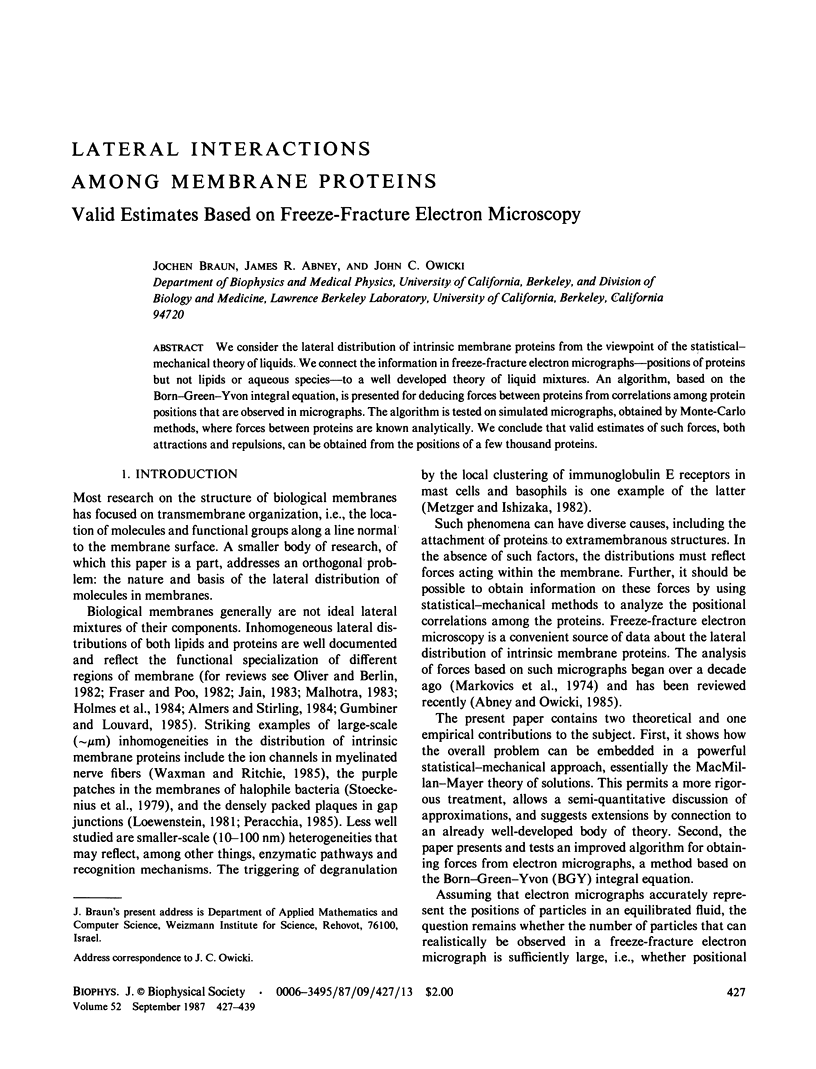

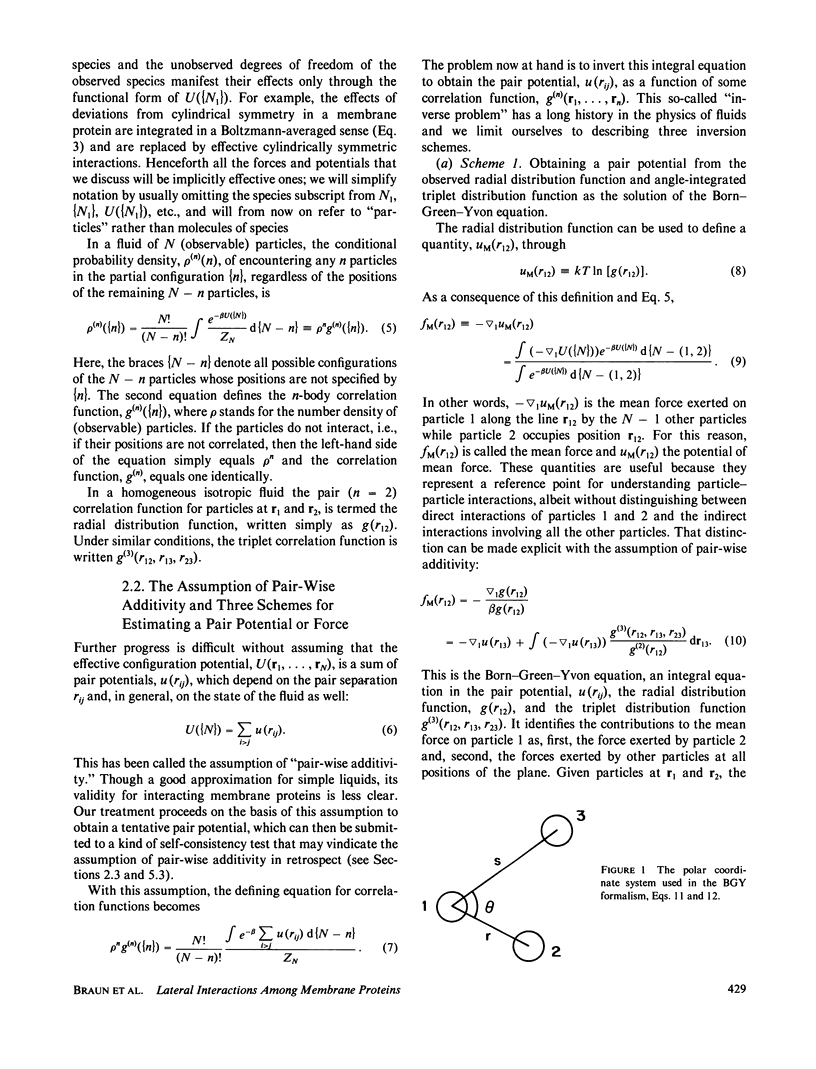
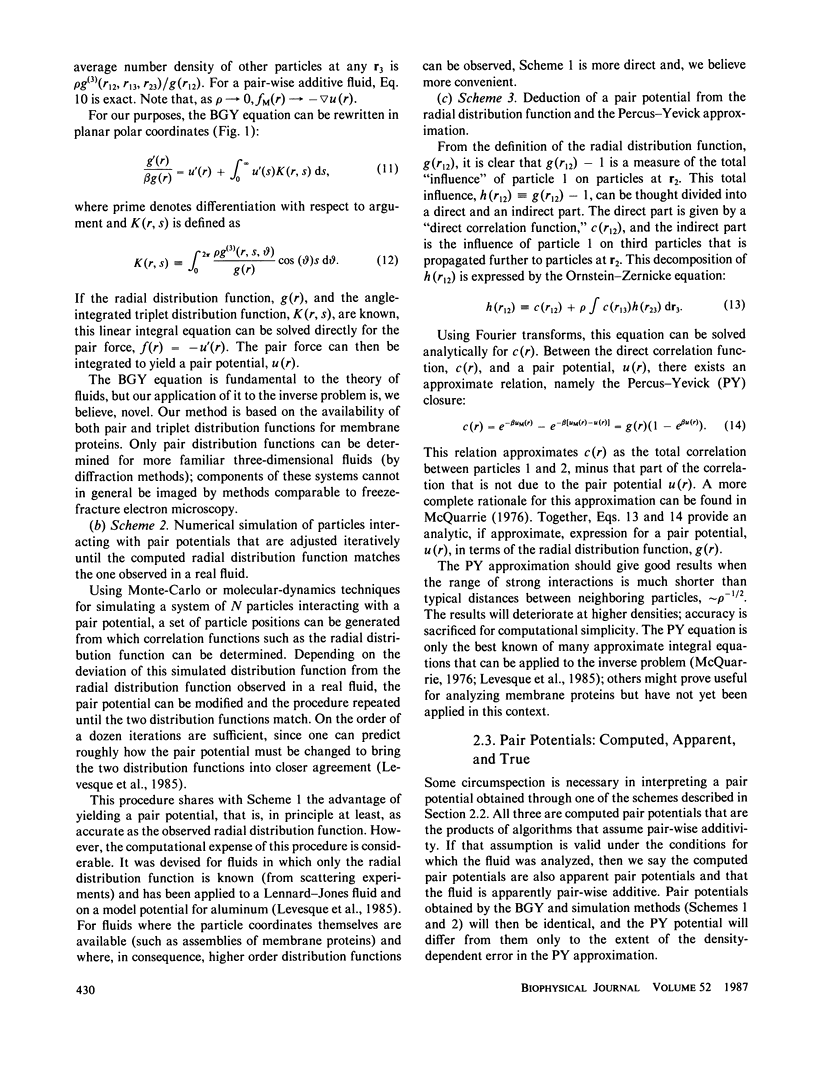
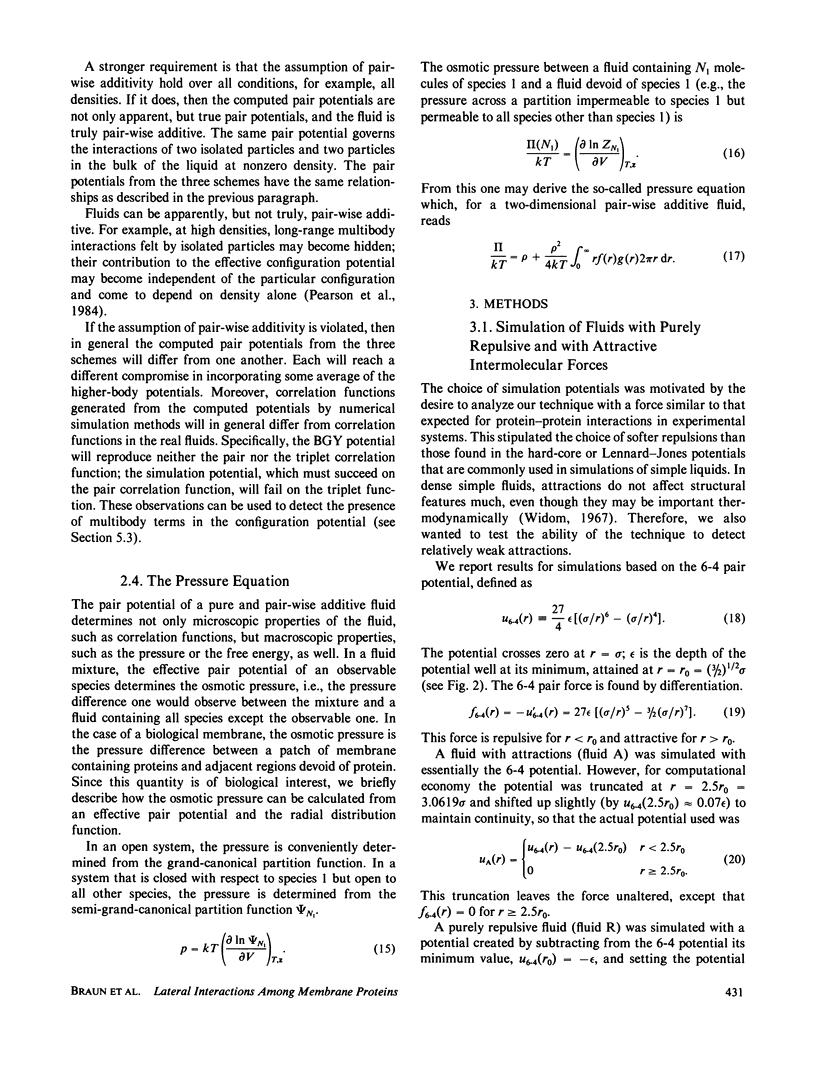
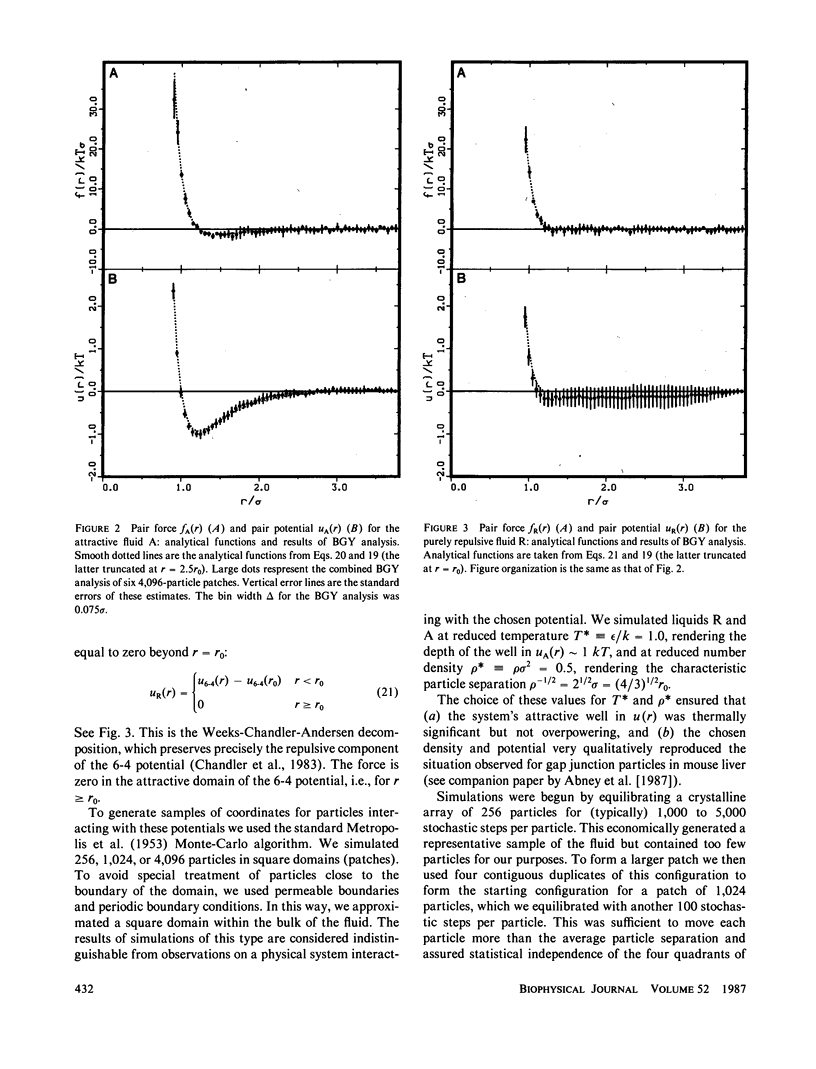
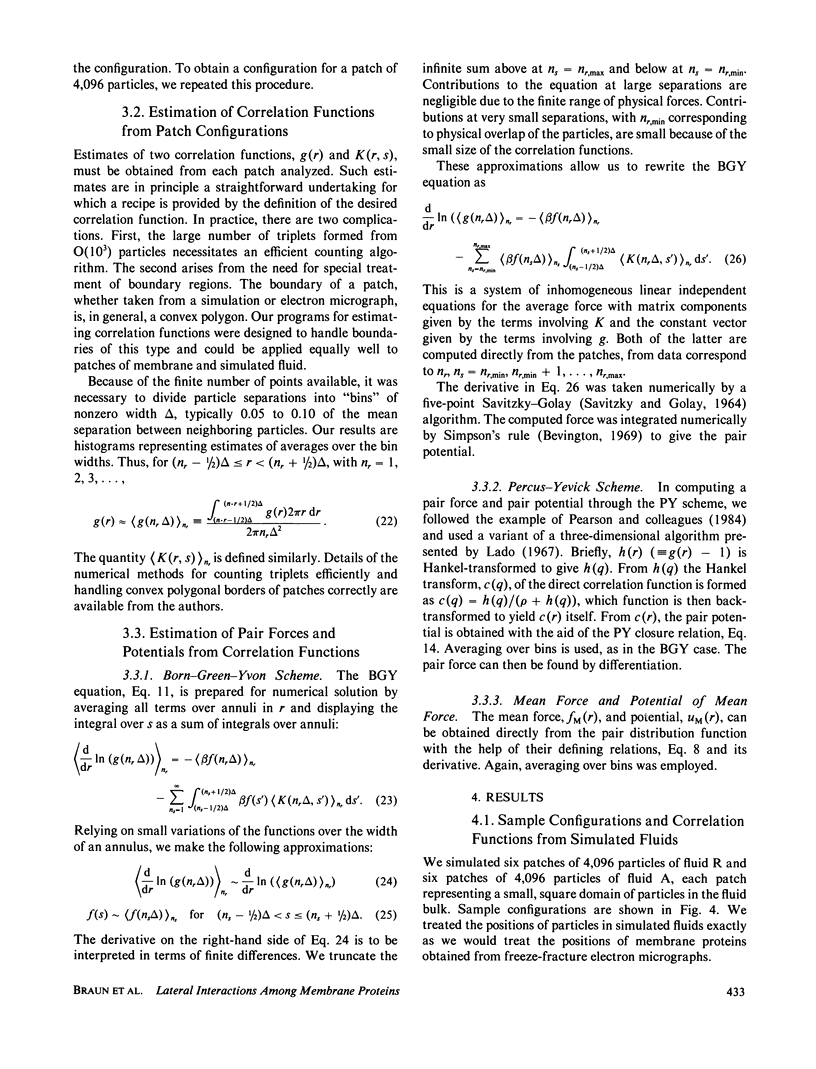
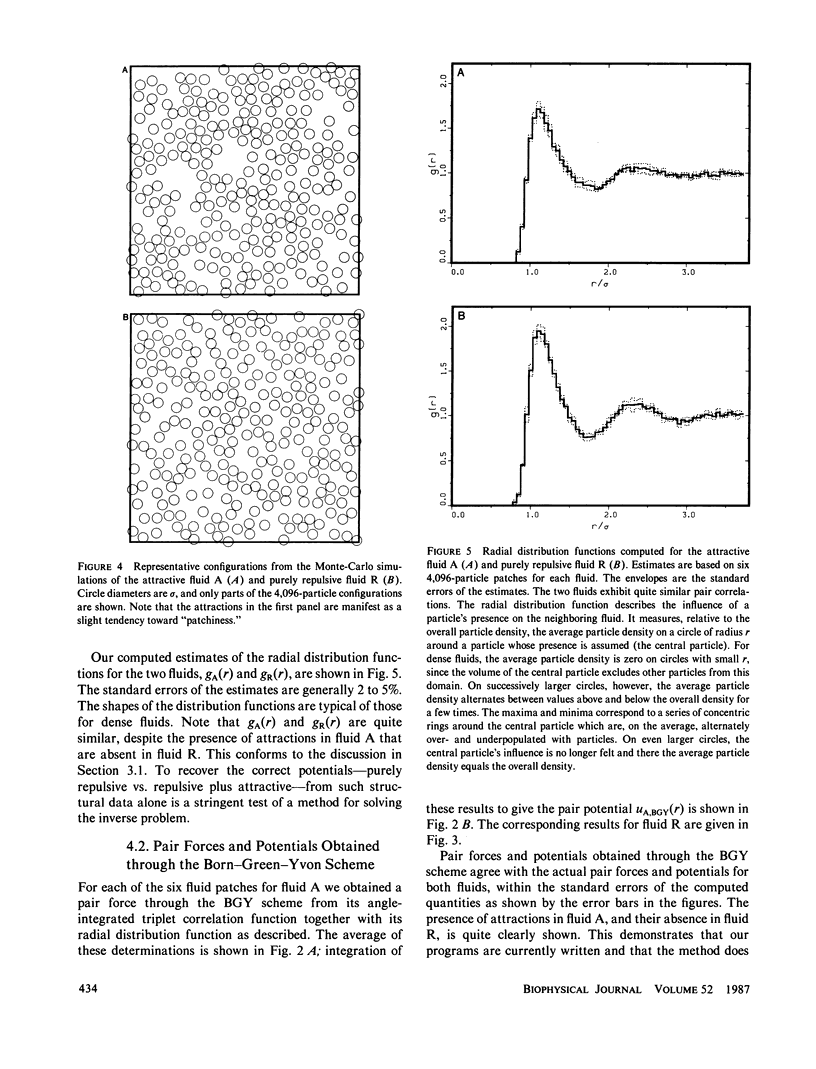
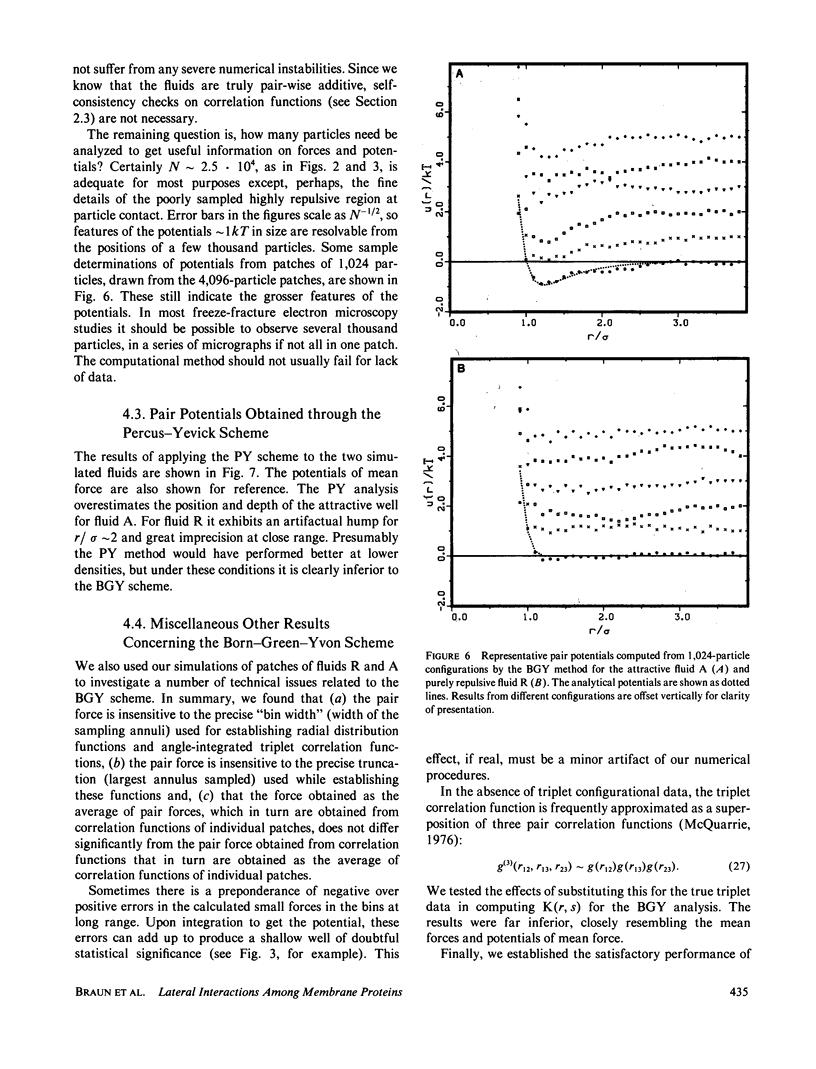
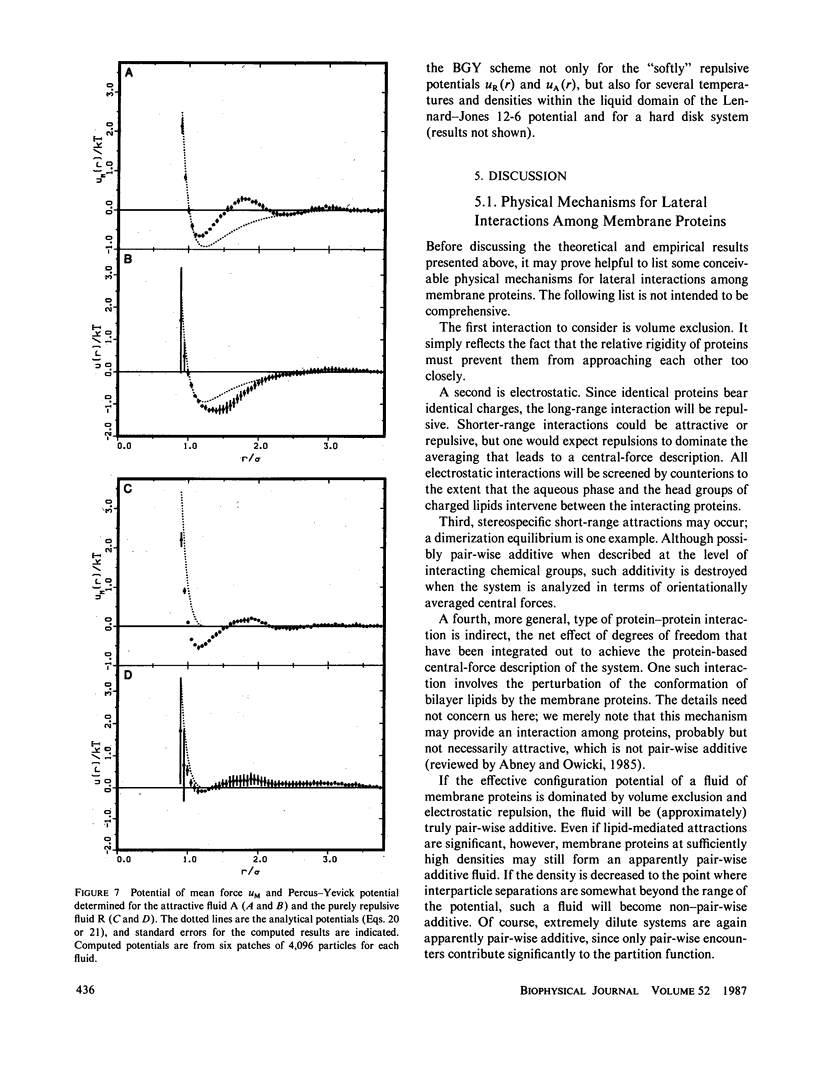
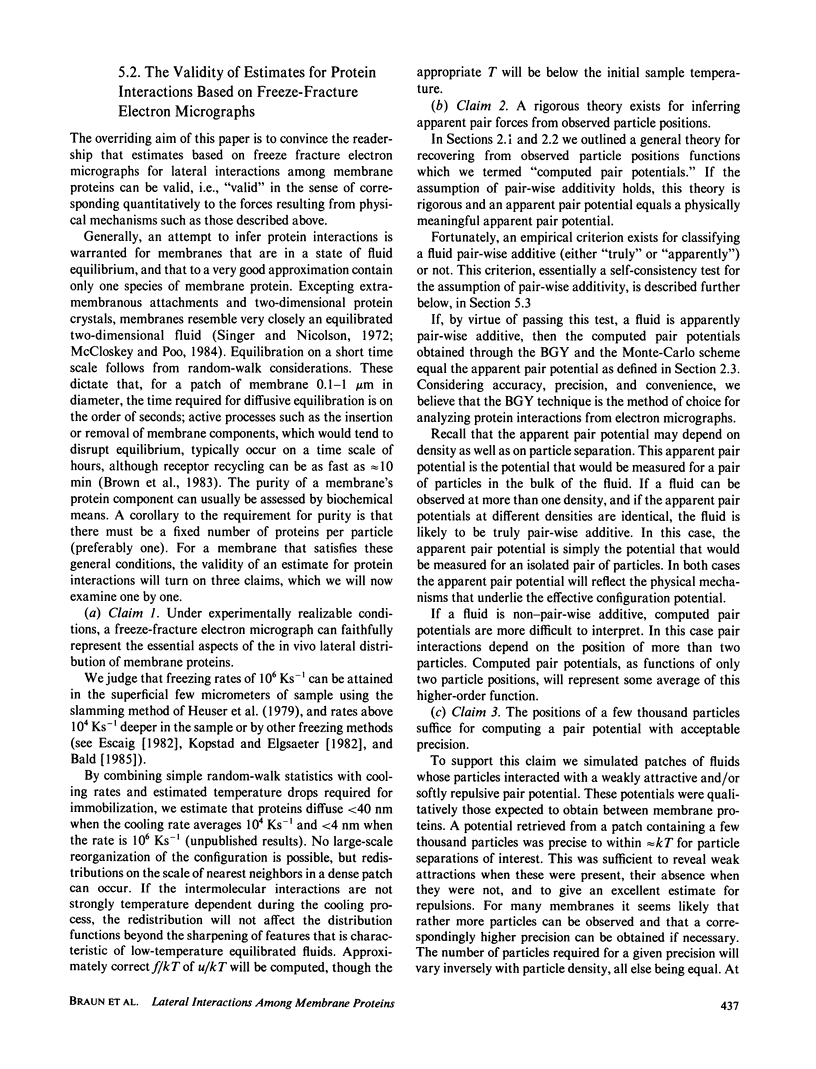
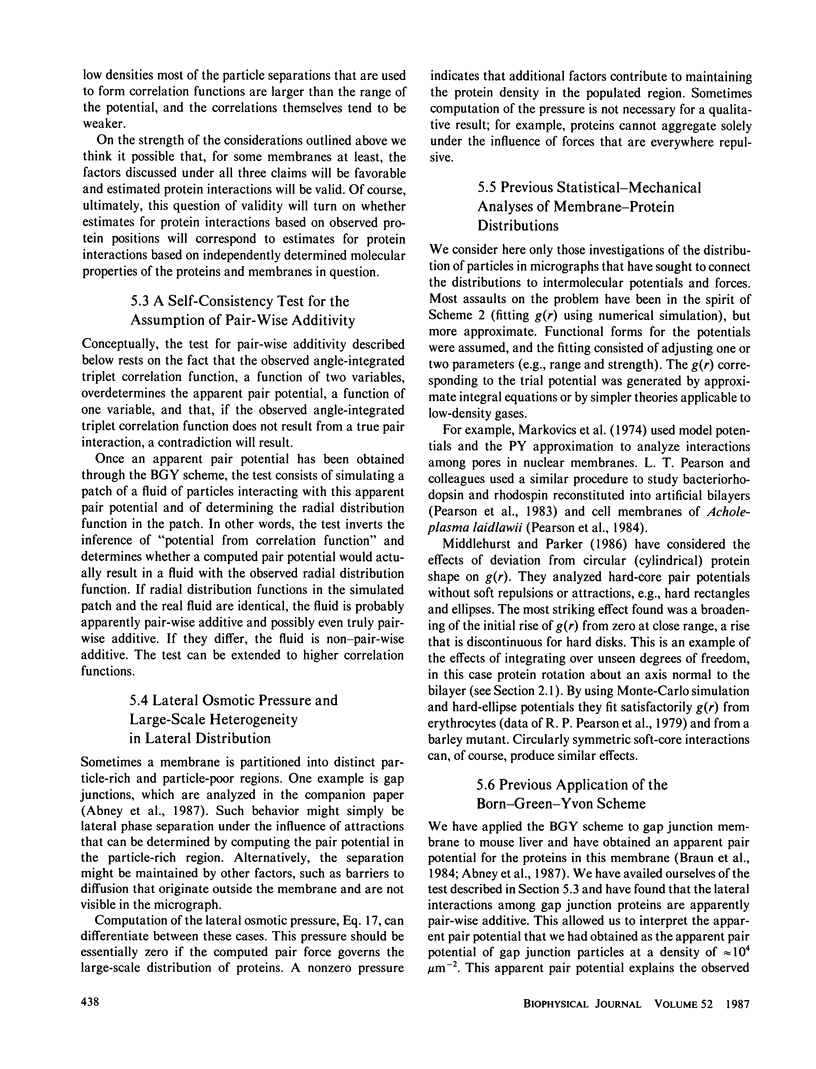
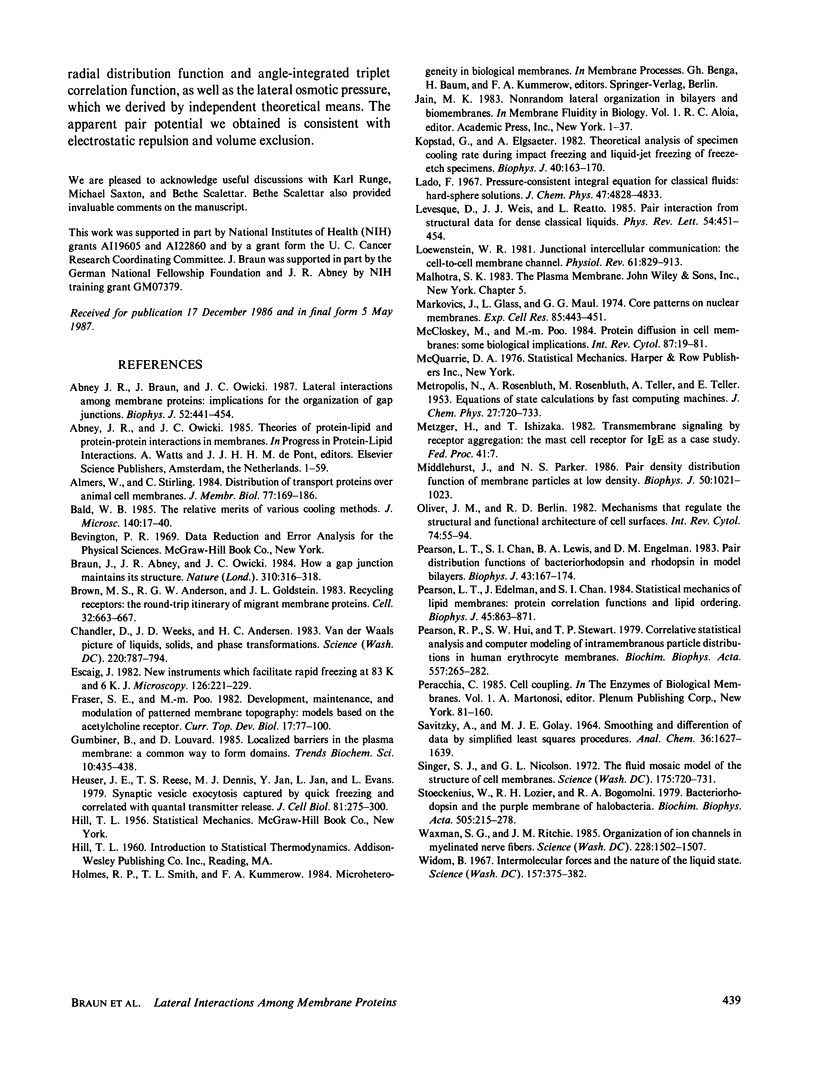
Selected References
These references are in PubMed. This may not be the complete list of references from this article.
- Abney J. R., Braun J., Owicki J. C. Lateral interactions among membrane proteins. Implications for the organization of gap junctions. Biophys J. 1987 Sep;52(3):441–454. doi: 10.1016/S0006-3495(87)83233-2. [DOI] [PMC free article] [PubMed] [Google Scholar]
- Almers W., Stirling C. Distribution of transport proteins over animal cell membranes. J Membr Biol. 1984;77(3):169–186. doi: 10.1007/BF01870567. [DOI] [PubMed] [Google Scholar]
- Braun J., Abney J. R., Owicki J. C. How a gap junction maintains its structure. 1984 Jul 26-Aug 1Nature. 310(5975):316–318. doi: 10.1038/310316a0. [DOI] [PubMed] [Google Scholar]
- Brown M. S., Anderson R. G., Goldstein J. L. Recycling receptors: the round-trip itinerary of migrant membrane proteins. Cell. 1983 Mar;32(3):663–667. doi: 10.1016/0092-8674(83)90052-1. [DOI] [PubMed] [Google Scholar]
- Chandler D., Weeks J. D., Andersen H. C. Van der waals picture of liquids, solids, and phase transformations. Science. 1983 May 20;220(4599):787–794. doi: 10.1126/science.220.4599.787. [DOI] [PubMed] [Google Scholar]
- Fraser S. E., Poo M. Development, maintenance, and modulation of patterned membrane topography: models based on the acetylcholine receptor. Curr Top Dev Biol. 1982;17(Pt 3):77–100. doi: 10.1016/s0070-2153(08)60519-0. [DOI] [PubMed] [Google Scholar]
- Heuser J. E., Reese T. S., Dennis M. J., Jan Y., Jan L., Evans L. Synaptic vesicle exocytosis captured by quick freezing and correlated with quantal transmitter release. J Cell Biol. 1979 May;81(2):275–300. doi: 10.1083/jcb.81.2.275. [DOI] [PMC free article] [PubMed] [Google Scholar]
- Kopstad G., Elgsaeter A. Theoretical analysis of specimen cooling rate during impact freezing and liquid-jet freezing of freeze-etch specimens. Biophys J. 1982 Nov;40(2):163–170. doi: 10.1016/S0006-3495(82)84471-8. [DOI] [PMC free article] [PubMed] [Google Scholar]
- Levesque D, Weis JJ, Reatto L. Pair interaction from structural data for dense classical liquids. Phys Rev Lett. 1985 Feb 4;54(5):451–454. doi: 10.1103/PhysRevLett.54.451. [DOI] [PubMed] [Google Scholar]
- Loewenstein W. R. Junctional intercellular communication: the cell-to-cell membrane channel. Physiol Rev. 1981 Oct;61(4):829–913. doi: 10.1152/physrev.1981.61.4.829. [DOI] [PubMed] [Google Scholar]
- Markovics J., Glass L., Maul G. G. Pore patterns on nuclear membranes. Exp Cell Res. 1974 Apr;85(2):443–451. doi: 10.1016/0014-4827(74)90148-7. [DOI] [PubMed] [Google Scholar]
- McCloskey M., Poo M. M. Protein diffusion in cell membranes: some biological implications. Int Rev Cytol. 1984;87:19–81. doi: 10.1016/s0074-7696(08)62439-0. [DOI] [PubMed] [Google Scholar]
- Middlehurst J., Parker N. S. Pair density distribution function of membrane particles at low density. Biophys J. 1986 Nov;50(5):1021–1023. doi: 10.1016/S0006-3495(86)83545-7. [DOI] [PMC free article] [PubMed] [Google Scholar]
- Oliver J. M., Berlin R. D. Mechanisms that regulate the structural and functional architecture of cell surfaces. Int Rev Cytol. 1982;74:55–94. doi: 10.1016/s0074-7696(08)61169-9. [DOI] [PubMed] [Google Scholar]
- Pearson L. T., Chan S. I., Lewis B. A., Engelman D. M. Pair distribution functions of bacteriorhodopsin and rhodopsin in model bilayers. Biophys J. 1983 Aug;43(2):167–174. doi: 10.1016/S0006-3495(83)84337-9. [DOI] [PMC free article] [PubMed] [Google Scholar]
- Pearson L. T., Edelman J., Chan S. I. Statistical mechanics of lipid membranes. Protein correlation functions and lipid ordering. Biophys J. 1984 May;45(5):863–871. doi: 10.1016/S0006-3495(84)84232-0. [DOI] [PMC free article] [PubMed] [Google Scholar]
- Pearson R. P., Hui S. W., Stewart T. P. Correlative statistical analysis and computer modelling of intramembraneous particle distributions in human erythrocyte membranes. Biochim Biophys Acta. 1979 Nov 2;557(2):265–282. doi: 10.1016/0005-2736(79)90326-2. [DOI] [PubMed] [Google Scholar]
- Singer S. J., Nicolson G. L. The fluid mosaic model of the structure of cell membranes. Science. 1972 Feb 18;175(4023):720–731. doi: 10.1126/science.175.4023.720. [DOI] [PubMed] [Google Scholar]
- Stoeckenius W., Lozier R. H., Bogomolni R. A. Bacteriorhodopsin and the purple membrane of halobacteria. Biochim Biophys Acta. 1979 Mar 14;505(3-4):215–278. doi: 10.1016/0304-4173(79)90006-5. [DOI] [PubMed] [Google Scholar]
- Waxman S. G., Ritchie J. M. Organization of ion channels in the myelinated nerve fiber. Science. 1985 Jun 28;228(4707):1502–1507. doi: 10.1126/science.2409596. [DOI] [PubMed] [Google Scholar]
- Widom B. Intermolecular Forces and the Nature of the Liquid State: Liquids reflect in their bulk properties the attractions and repulsions of their constituent molecules. Science. 1967 Jul 28;157(3787):375–382. doi: 10.1126/science.157.3787.375. [DOI] [PubMed] [Google Scholar]


